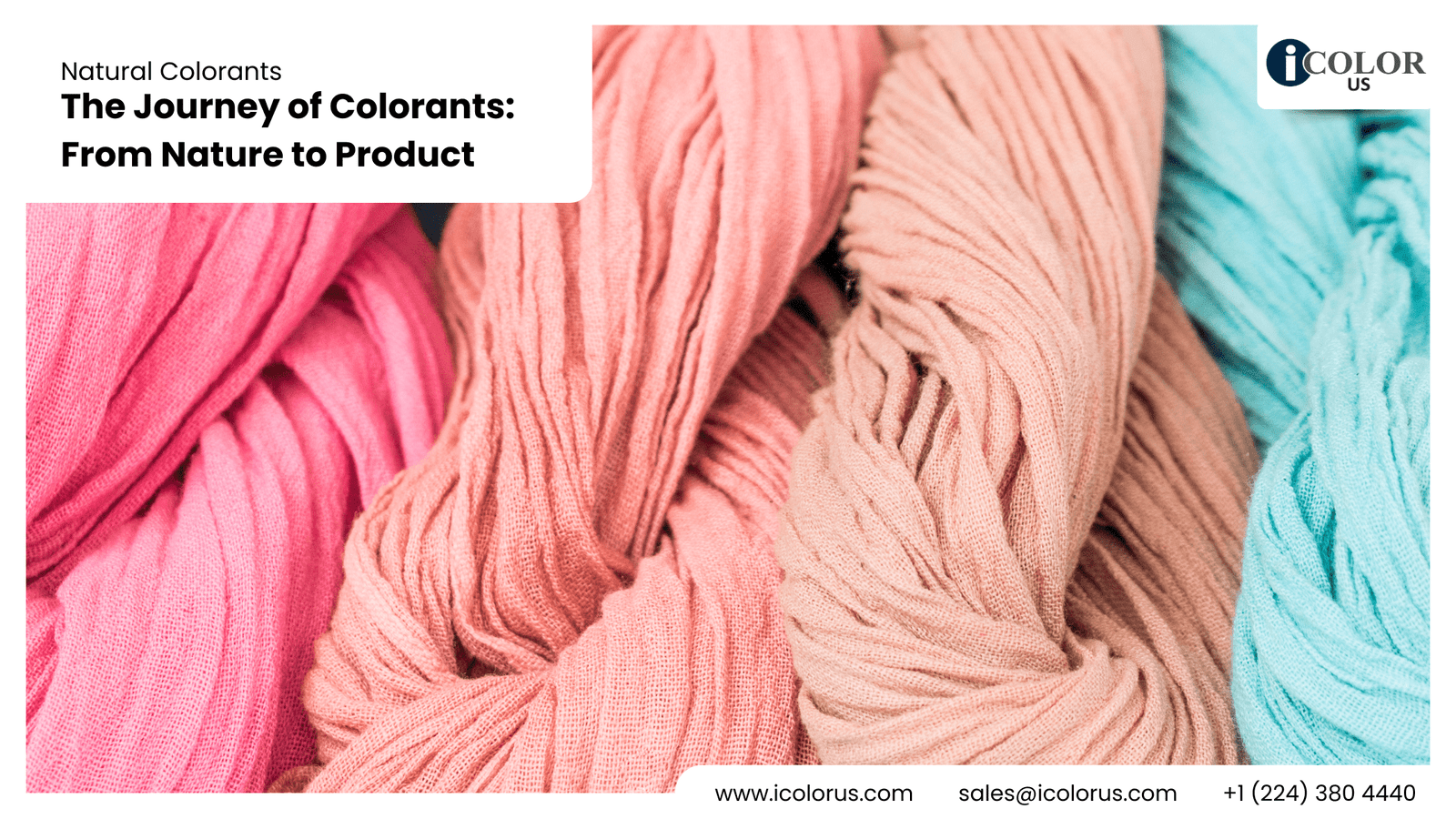The Journey of Colorants: From Nature to Product
Introduction
Color has always captivated humanity. Whether it’s the vibrant hues of a sunset, the deep blue of the ocean, or the rich tones of autumn leaves, color is a fundamental part of our world. Colorants, substances that impart color to other materials, play a crucial role in numerous industries, from textiles to food, cosmetics to pharmaceuticals. But have you ever wondered where these colorants come from and how they have evolved over time? Let’s embark on a journey to explore the fascinating world of colorants, tracing their path from natural origins to modern products.
The Origins of Colorants
Long before synthetic dyes were invented, humans relied on natural sources to add color to their lives. These natural colorants were derived from plants, animals, and minerals, and were used in everything from clothing to art, food to cosmetics.
Types of Natural Colorants
Plant-based Colorants
Plants were among the first sources of colorants. Think of the bright yellows from turmeric, the deep reds from madder root, and the blues from indigo. These dyes were not only beautiful but also relatively easy to extract and apply.
Animal-derived Colorants
Some of the most historically significant dyes came from animals. The deep crimson dye known as carmine, for example, is derived from the cochineal insect. Similarly, Tyrian purple, a dye prized by ancient royalty, was made from the mucus of certain sea snails.
Mineral-based Colorants
Minerals also provided a rich palette of colors. Ochres, clays, and other mineral pigments were used in prehistoric cave paintings and have been employed throughout history in various artistic and practical applications.
Extraction Methods of Natural Colorants
Traditional Extraction Techniques
Traditional methods of extracting colorants from natural sources often involved boiling plant materials, fermenting insects, or grinding minerals into fine powders. These methods, while effective, were labor-intensive and time-consuming.
Modern Advancements in Extraction
Today, advanced technologies have streamlined the extraction process. Techniques such as supercritical fluid extraction and ultrasonic extraction allow for more efficient and environmentally friendly production of natural dyes.
Historical Significance of Natural Colorants
Colorants have always held cultural, religious, and economic significance. In ancient civilizations, certain dyes were reserved for the elite or used in religious rituals. The trade of colorants like indigo and cochineal was a major economic activity, driving exploration and colonization.
Transition to Synthetic Colorants
The 19th century saw a revolutionary shift with the discovery of synthetic dyes. The first synthetic dye, mauveine, was accidentally discovered by William Henry Perkin in 1856. This breakthrough marked the beginning of a new era in the world of colorants.
Advantages of Synthetic Colorants Over Natural Ones
Synthetic colorants offered several advantages: they were cheaper, more consistent in quality, and available in a wider range of colors. This made them highly desirable for industrial applications.
Types of Synthetic Colorants
Azo Dyes
Azo dyes are the most widely used synthetic colorants, known for their vivid colors and versatility. They are used in textiles, food, and cosmetics.
Anthraquinone Dyes
Anthraquinone dyes are known for their brilliant hues and are often used in high-quality fabrics and specialized applications.
Triarylmethane Dyes
Triarylmethane dyes are vibrant and often used in inks, plastics, and some food products.
Production of Synthetic Colorants
The production of synthetic colorants involves complex chemical processes, often starting with petrochemicals. These processes require precise control and sophisticated technology to ensure consistency and safety.
Applications of Colorants
In Textiles
Colorants are perhaps most famously used in textiles. From the vibrant saris of India to the denim jeans of the West, dyes bring fabric to life.
In Food and Beverages
Food colorants, both natural and synthetic, are used to make food more appealing. Think of the bright reds of strawberries in jam or the deep green of mint-flavored treats.
In Cosmetics
Colorants in cosmetics help create a wide range of products, from lipstick to eyeshadow. These products rely on colorants to enhance beauty and express individuality.
In Pharmaceuticals
Even in pharmaceuticals, colorants play a role, helping to identify different medications and improve their appearance.
Health and Environmental Concerns
While synthetic colorants have many benefits, they also pose health and environmental risks. Some synthetic dyes have been found to be toxic or carcinogenic. As a result, regulations and safety standards have been established to protect consumers and the environment.
Sustainability and the Future of Colorants
The future of colorants lies in sustainability. Researchers are exploring eco-friendly alternatives and developing new technologies to reduce the environmental impact of colorant production.
Case Studies of Colorant Use
Traditional Japanese Indigo Dyeing
The art of indigo dyeing in Japan, known as “aizome,” is a beautiful example of traditional colorant use. This method involves fermenting indigo leaves to produce a deep blue dye, which is then used to create stunning textiles.
Modern Synthetic Colorants in the Fashion Industry
In contrast, the fashion industry today relies heavily on synthetic dyes to produce a vast array of colors. Brands are increasingly exploring sustainable options to meet consumer demand for eco-friendly products.
The Art and Science of Color Matching
Color matching is both an art and a science. Different industries employ various techniques to achieve the perfect hue and ensure color consistency. This involves a combination of visual assessment and technological tools.
Consumer Awareness and Preferences
Consumer preferences are shifting towards natural and sustainable products. This trend is influencing the market, encouraging companies to innovate and offer more eco-friendly colorant options.
Conclusion
The journey of colorants, from their natural origins to their modern synthetic counterparts, is a testament to human ingenuity and our desire for beauty. As we move towards a more sustainable future, the balance between nature and technology will continue to shape the world of colorants.
FAQs
What are the main differences between natural and synthetic colorants? Natural colorants are derived from plants, animals, and minerals, while synthetic colorants are man-made, often from petrochemicals. Synthetic colorants tend to be cheaper, more consistent, and available in a wider range of colors.
Are natural colorants safer than synthetic ones? Natural colorants are generally considered safer as they are less likely to contain harmful chemicals. However, not all natural colorants are completely safe, and some can cause allergic reactions.
How do regulations impact the colorant industry? Regulations ensure that colorants used in food, cosmetics, and other products are safe for consumers. These regulations require extensive testing and approval before a colorant can be used commercially.
What are some emerging trends in colorant technology? Emerging trends include the development of bio-based colorants, improvements in extraction technologies, and a focus on sustainability. Companies are also exploring new ways to produce vivid and lasting colors without harmful environmental impacts.
How can consumers make informed choices about colorants? Consumers can look for products that use natural or eco-friendly colorants, check for certifications indicating safety and sustainability, and stay informed about the potential health impacts of various colorants.





